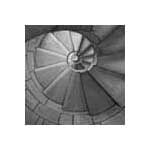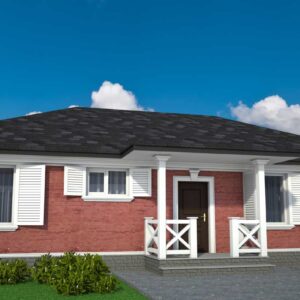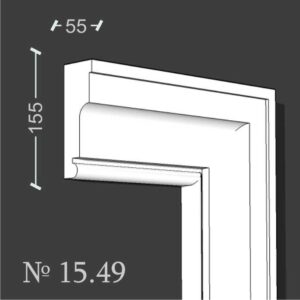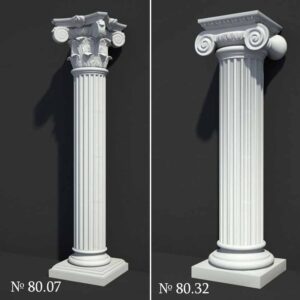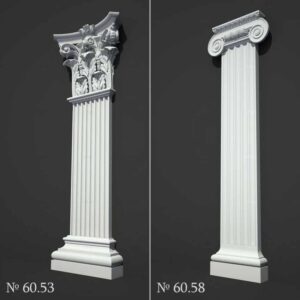In the vast tapestry of architectural materials, bricks have long held a revered place. These humble clay blocks fired to perfection, have been the cornerstone of many a civilization. Today, as we stand at the crossroads of tradition and modernity, bricks are redefining their role, showcasing their brilliance in contemporary architectural designs. This journey of transformation, from mere building blocks to artistic statements, is a testament to the timeless allure of bricks.



The Timeless Tale of Bricks
Bricks, with their earthy tones and textured finish, have a story that spans millennia. From ancient civilizations to modern metropolises, they have been the silent witnesses to the rise and fall of empires, the evolution of cultures, and the march of progress. Their resilience, their adaptability, and their inherent beauty have made them a favorite among architects and builders.
In modern design, bricks are not just about strength and durability; they are about aesthetics, about creating spaces that resonate with warmth, character, and charm. The versatility of bricks allows architects to experiment, play with patterns, and craft facades that are both functional and visually stunning.
Yet, the true beauty of bricks lies in their simplicity. In an age of glass and steel, bricks offer a touch of nostalgia, a connection to the past. They remind us of the timeless principles of design, of the importance of harmony, proportion, and balance. They are a bridge between the old and the new, a symbol of continuity in a constantly changing world.
Bricks, in their modern avatar, are not just about building; they are about expressing, telling stories, and about creating spaces that are as much about the soul as they are about the structure.


Crafting Contemporary Masterpieces
The modern architectural landscape is a canvas of innovation, creativity, and experimentation. And bricks, with their rich history and timeless appeal, are adding new dimensions to this canvas. Architects are pushing the boundaries, using bricks in ways that were once thought impossible, crafting contemporary masterpieces that are a blend of art and engineering.
One such example is the use of bricks to manipulate light. By playing with the placement, orientation, and design of bricks, architects are creating spaces that are luminous, dynamic, and ever-evolving. The interplay of light and shadow, the dance of sunbeams on brick walls, and the subtle changes as the day progresses, all add a touch of magic to the spaces.
Another trend is the fusion of bricks with other materials. Be it glass, steel, or wood, bricks complement and enhance the beauty of these materials, creating designs that are eclectic, unique, and breathtakingly beautiful. The juxtaposition of the rough texture of bricks with the smoothness of glass or the sheen of steel adds depth, character, and a touch of the unexpected to the designs.
But more than the aesthetics, it’s the ethos behind these designs that truly sets them apart. It’s about sustainability, about respecting the environment, and about creating spaces that are in harmony with nature. Bricks, with their eco-friendly credentials, are leading the way, setting new benchmarks in sustainable design.


Bricks and the Future of Design
As we look to the future, bricks hold immense promise. With advancements in technology, sustainable practices, and a deeper understanding of design principles, the possibilities are endless. Imagine bricks that are lighter, more durable, and more energy-efficient. Imagine designs that are modular, adaptable, and responsive to the environment.
The future is not just about new designs; it’s about reimagining the old. It’s about preserving the heritage, restoring the old structures, and giving them a new lease of life. Bricks, with their timeless appeal, are at the forefront of this movement, bridging the gap between the past and the future.
But more than the designs, it’s the philosophy behind them that will define the future. A philosophy that is rooted in respect for the environment, in the principles of sustainable design, and in the belief that architecture is not just about creating spaces; it’s about creating experiences. Experiences that inspire, evoke emotions, and leave a lasting impact.
Bricks, with their rich legacy and their modern brilliance, are poised to play a pivotal role in this journey. A journey that promises to be as exciting, as inspiring, and as transformative as the humble brick itself.


The Artistic Language of Bricks
Every brick laid is akin to a brushstroke on a canvas. The patterns, the textures, and the colors come together to form a language, an artistic expression that speaks volumes. In modern architectural design, this language has evolved, becoming more nuanced, more sophisticated, and more reflective of the world around us.
Bricks, in their myriad shades of reds, browns, and grays, offer a palette that is both rich and versatile. Architects and designers harness this palette, creating facades that are abstract, geometric, or even impressionistic. The beauty lies in the details – the way a particular shade catches the light, the way a texture adds depth or the way a pattern tells a story.
Beyond the visual appeal, the tactile experience of bricks adds another layer to this artistic language. The roughness, the coolness, and the solidity of bricks evoke emotions, memories, and sensations. They ground us, connect us to the earth, and remind us of the timeless beauty of nature.
In the hands of visionary architects, bricks become more than just building materials; they become tools of artistic expression. Tools that are used to craft narratives, evoke emotions, and create spaces that are as much about the soul as they are about the structure.

Sustainability and the Brick Revolution
In an age where sustainability is not just a buzzword but a necessity, bricks are leading the charge. Their eco-friendly nature, coupled with their durability and longevity, makes them the material of choice for sustainable architectural designs. But it’s not just about the material; it’s about the philosophy behind it.
Modern designs are focusing on reducing carbon footprints, optimizing energy efficiency, and promoting holistic living. Bricks, with their natural insulation properties, play a pivotal role in this. They regulate temperatures, reduce the need for artificial heating or cooling, and create spaces that are in harmony with the environment.
Furthermore, the use of locally sourced bricks reduces transportation costs and emissions, further enhancing their sustainability credentials. Recycled bricks, reclaimed from old structures, add another dimension, merging the old with the new and creating designs that are both eco-friendly and steeped in history.
The future of sustainable design is bright, and bricks, with their myriad benefits and timeless appeal, are set to play a starring role. They are a testament to the fact that sustainability and aesthetics can go hand in hand, creating a world that is beautiful, responsible, and inspiring.

The Global Influence of Brick Design
From the bustling streets of New York to the serene landscapes of Asunción, bricks are leaving their mark. Their universal appeal, coupled with their adaptability, has made them a favorite across cultures, climates, and continents. Each region, with its unique sensibilities and challenges, brings a new perspective, and a new dimension to brick design.
In tropical climates, bricks are used to create ventilated facades, allowing for airflow and reducing heat. In colder regions, their insulation properties are harnessed, creating cozy, warm interiors. From the minimalist designs of Scandinavia to the vibrant patterns of South America, bricks are being used to reflect the ethos, spirit, and soul of the region.
This global influence is not just about design; it’s about collaboration, learning, and about sharing. Architects from different parts of the world are coming together, exchanging ideas, and pushing the boundaries of what’s possible with bricks. It’s a global movement, a revolution that is redefining the landscape of modern architectural design.
